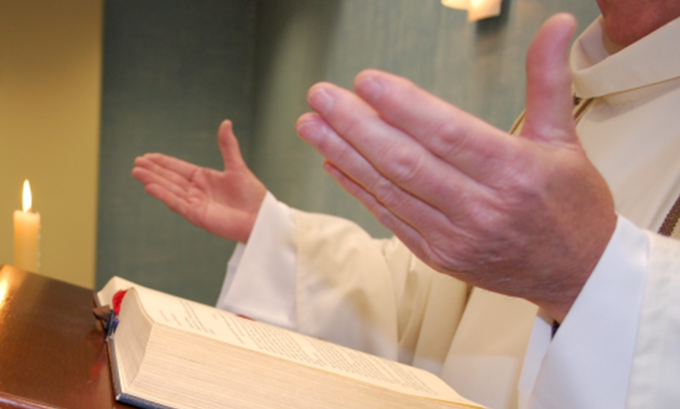The Liturgy of the Word
National Liturgical Council

Why have Scripture Readings at Mass?
If we are to appreciate how we can more ‘fully, consciously, and actively’ participate in the readings each Sunday, it is important to look at why the scriptures are read every time we gather for Mass.
The General Instruction of the Roman Missal tells us: "For in the readings, as expounded in the Homily, God speaks to his people, opening up to them the mystery of redemption and salvation, and offering them spiritual nourishment; and Christ himself is present in the midst of the faithful through his word" (GIRM 55).
Another important document called the Introduction to the Lectionary says: ‘The Church is nourished spiritually at the table of God’s word and at the table of the Eucharist.’ (GIL 10)
Here then, are two important reasons why Bible readings are part of every liturgy: a) because God is present when the Word is proclaimed in the midst of the liturgical assembly and b) because we need to be fed as much by God's Word as by the sacrament of the Eucharist if we are to know what it means to really live out our Baptism as followers of Christ. The Church, after all, is founded on the Word of God.
The Constitution on the Sacred Liturgy (the very first document to come out of Vatican II) went so far as to say "The Liturgy of the Word and the Liturgy of the Eucharist are so closely connected with each other that they form but one single act of worship" (CSL 56).
The fact that we meet Christ in the Word as well as in the sacrament of Holy Communion is not a truth that Catholics have been steeped in, at least not since the Middle Ages.
While the Word of God has always had a special place in the Church, for hundreds of years its importance as a principal element of the liturgy was lost.
Reforms of Vatican II
Before Vatican II, we used to have two readings on a Sunday - an Epistle and a Gospel reading. What’s more, they were the same every year! The Council Fathers therefore decreed that "the treasures of the Bible are to be opened up more lavishly, so that richer fare may be provided for the faithful at the table of God’s Word" (CSL 51).
This richer fare means that there are now three readings on Sundays and special Feasts, - including one from the Old Testament or Hebrew Scriptures which used to be read at Mass in earlier times. These readings are now spread over a three year cycle - Years A, B and C.
The Gospel
Instead of Matthew’s Gospel being the primary Gospel on Sundays as it was for centuries, our Sunday Gospel readings are now taken from Matthew (Year A), Mark (Year B), Luke (Year C) and John whose Gospel is reserved for Lent and Easter, and five weeks of Year A.
First & Second Reading
Every Sunday except during Easter, the First Reading is a reading from the Old Testament. We also now have more readings from the New Testament Letters. These Letters, (except during Easter Year C), form the Second Reading.
The current three-year cycle of three readings on Sundays and special Feasts is indeed a “richer fare” than we have had in living memory, and possibly in the history of the Church.
This article was originally published in Let’s Walk Through The Mass. © Diocese of Parramatta. 1999, 2000, 2007. Reprinted with permission.
